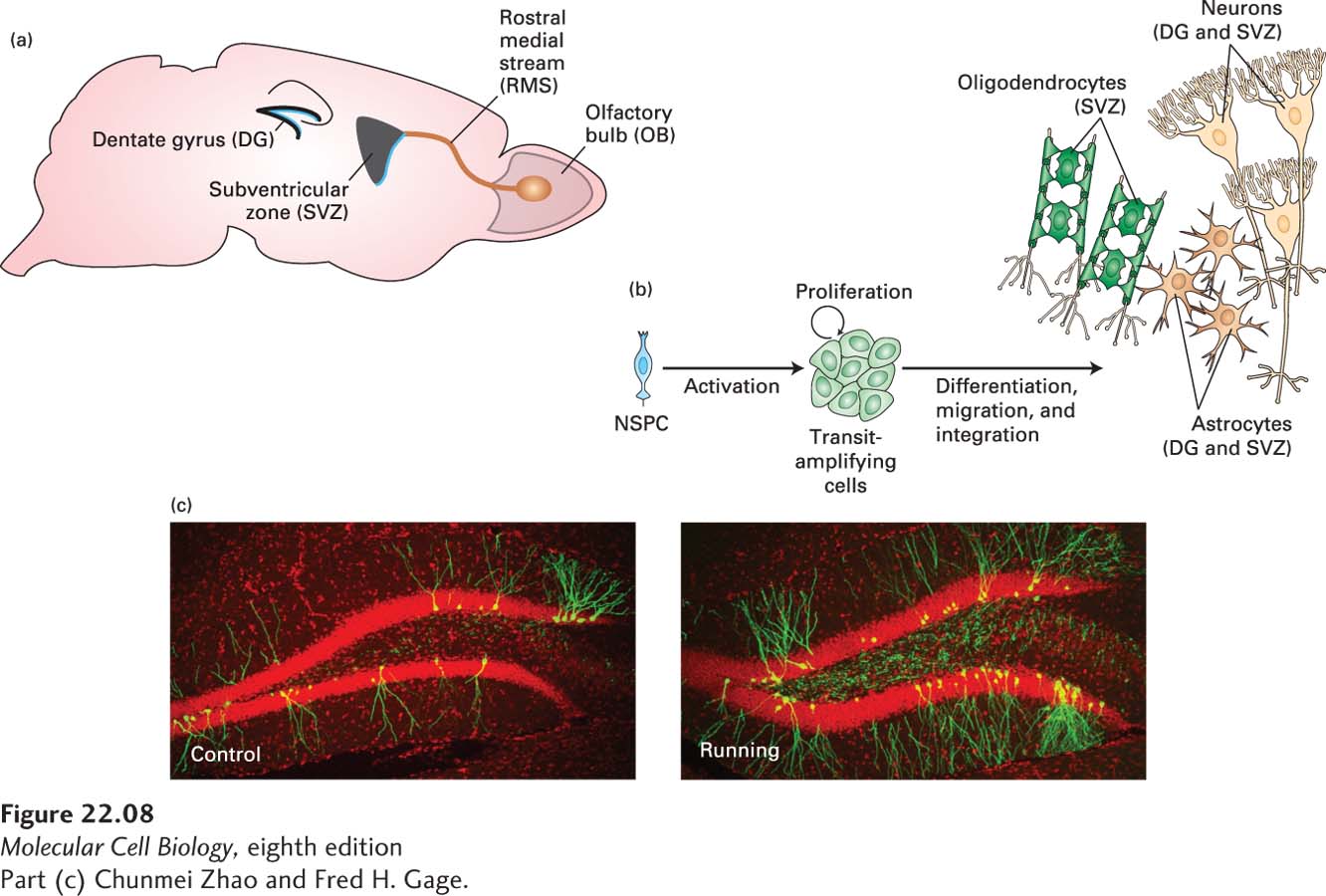
FIGURE 22- 8 Neurogenesis in the adult brain. (a) New neurons are born in two regions of the adult brain, the dentate gyrus (DG) in the hippocampus and the subventricular zone (SVZ). Neurons derived from neural stem cells in the svz migrate to the olfactory bulb (OB) via the rostral medial stream (RMS) in mice. (b) Neural stem and precursor cells (NPSCs) can be activated to divide into a class of intermediate precursor cells called transit- amplifying cells, which in turn can divide into astrocytes or neurons in the DG or into astrocytes, neurons, or oligodendrocytes in the SVZ. (c) Newly born neurons in the dentate gyrus were labeled with a retrovirus that expresses GFP. Shown are sections of the dentate gyrus from control mice and from mice that were allowed to exercise on a running wheel in their cages for a week. The newly born neurons are green, and the extensive dendritic branches they have developed indicate that they have survived and have become incorporated into the hippocampus. All the other cells in the hippocampus are labeled with a red nuclear marker. The dense red labeling in the dentate gyrus (the sideways V- shaped structure) are the cell bodies of the granule cells. The other red cell bodies represent glial cells and inhibitory neurons. As this image illustrates, the percentage of granule cells in the dentate gyrus that are newly born is very small, and is significantly increased by running.
[Part (c) Chunmei Zhao and Fred H. Gage.]
[Leave] [Close]